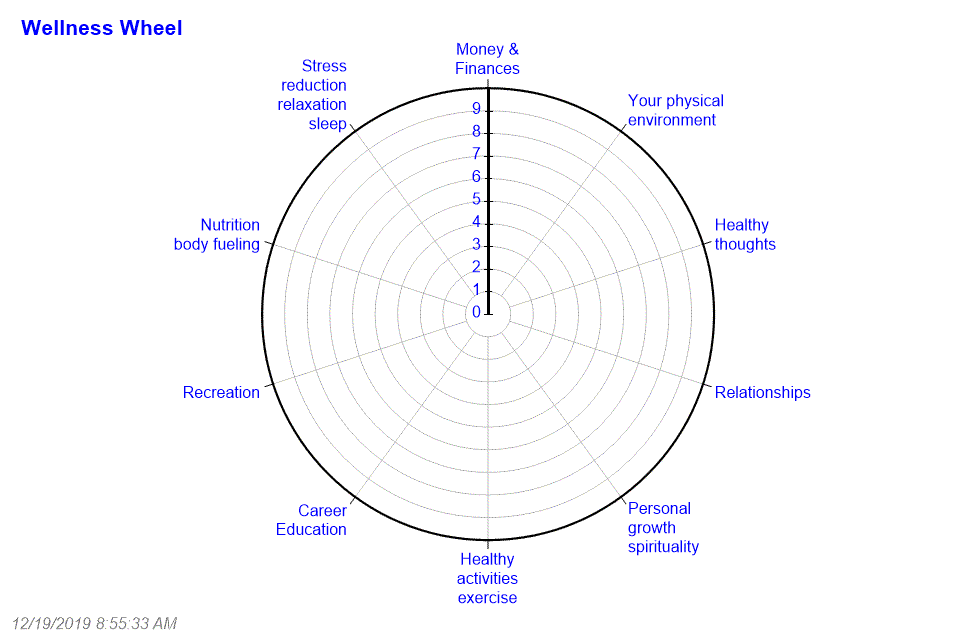2020 is here! It’s a big year and a sparkling new decade! You get a clean slate to write dreams and goals for your business and yourself.
Perhaps this is the year you want to generate a million dollars in revenue; finally eat right and fit into your skinny jeans; be more productive so you can find time for self-care; or travel to Paris, Bali or Japan.
How are you going to make it happen? To turn your dreams into a reality and improve yourself and your business you need a plan and SMART metrics-driven goals to measure, track, and fuel your success.
What Are Metrics?
You’ve probably heard the quote, “You can’t manage what you don’t measure.” Metrics are quantifiable measures that help gauge and track how you are doing in your business and life. As an entrepreneur, you undoubtedly know the value of tracking key metrics like sales revenue, profit margins, marketing impact (i.e. social media stats and web analytics), customer loyalty, and qualified leads per month. But did you know that tracking personal metrics can help you be more successful, improve your health, and even boost happiness?
Thanks to Fitbits, Apple watches, apps and psychological instruments you can track everything from health and productivity to emotions and personal growth. You can also create success metrics that are important to you such as the number of books you read, countries or states visited, new skills learned, or how much time you spend with people you love.
The biggest challenge is determining what to track. Once you find your metric you can engage with the numbers to fuel the continuous improvement process. Not sure where to start? Follow these 5-steps and by 2021 you’ll be astonished at the progress you’ve made and how good you feel about yourself.
1. Determine what matters
Since metrics are key indicators of significant achievements, you first have to determine what is important to you so you can measure what matters. If you don’t know what’s important, you may end up simply watching the numbers go up which isn’t inspiration or motivational.
Before you even get to the numbers, do some inquiries. You can even buy a special 2020 journal to document your self-improvement journey. Journaling regularly is a success habit that can help you lower stress and anxiety, spark creativity and boost self-awareness and self-discipline.
Start by think and writing about what is important to you. Not your partner, kids, employees or friends. This isn’t about pleasing or receiving the approval of others. It’s about loving yourself.
What’s your definition of success or self-fulfillment? How do you want to look and feel in 2020? What would make you truly happy? What personal accomplishments would boost self-satisfaction, self-love and self-confidence? Dream big and vividly visualize what it will feel like when you have what you want. If your dream doesn’t feel exciting dig deeper.
Feeling stuck? Create categories such as health, energy, nutrition, physical environment, wellness, exercise, personal growth, spirituality, competences, finances/money, relationships, love, career, education, recreation/leisure, or mind/emotions. Or use a copy of the Wheel of Life to gauge where you’re at in various categories and determine which areas you want to focus on in the coming year.
2. Create a mission statement
Next, create a mission statement that encompasses your definition of success and also contains your why. For example: “I want to get in the best shape of my life and live more mindfully so that I can keep up with and be present for my kids, have the energy and mindset to rock my business and enjoy my life to the fullest.” Take your time with this one.
3. Find your metrics
Now you’re ready to figure out what you want to measure. When selecting metrics think about numbers that capture the value you are trying to create. Start out by listing all the ways you might measure your outcome.
For example, if improving your health is high on your priorities list you might write out metrics for exercise (frequency, time, or distance), biometrics (blood pressure, resting heart rate, body composition), diet (servings of fruits and vegetables, dining in rather than out, planning meals) or sleep (quantity or quality).
Want to improve relationships? Choose measurements such as the amount of time you spend with friends or family; the number of close friends you have, or how often you say, “I love you.”
Looking to be more fulfilled, happier or want to improve your mind and emotions? Track the amount of time spent meditating, practicing gratitude (a proven happiness booster) or engaging in activities you enjoy, time or money donated to a charity you care about, or the number of negative or positive thoughts you have in a day. Want to be kinder to yourself? Check out the Self-compassion Scale. Working on positivity? You can track it HERE.
While it’s tempting to go overboard and track multiple things, don’t create a long, exhausting list of measures. To start, find two or three that really matter to you and reflect the outcomes that you want to achieve in 2020.
4. Create SMART goals
Once you have your metrics, create SMART - Specific, Measurable, Attainable, Relevant and Time-based – goals that will improve your numbers.
For example, if one of your life goals is to have a better relationship with your spouse and your metric is how often you connect in a meaningful way, you could set goals such as: I will text my partner at 10 and 2 Monday-Friday to say I love you, make sure we take a walk together after work on Tuesdays and Thursdays and schedule three date nights a month.
If you want to improve your diet and you’re measuring fruit and vegetable consumption, your SMART goal might be: I will pack a healthy lunch MWF that contains at least 2 servings of produce and always carry a piece of fruit in my purse for a snack. Focused hydration? Your goal might be: I will bring a water bottle to work, keep it filled and set a phone reminder to drink a cup of water every hour.
Want to improve your relationship with yourself and boost self-compassion? Create a SMART goal that reflects the time spent on self-care. For example, I will block out three, one-hour blocks every week, schedule in activities I enjoy and do them.
5. Get accountable
In January the momentum to stay on track is high, but by the second quarter, motivation can start to fade. Hire a coach (they can help you progress faster and with more ease), get an accountability partner or enlist your eWomenNetwork’s chapter to help you succeed!
Finally, be patient and honest. Change takes time so be easy with yourself when looking at the numbers. While you may think you need self-criticism to progress and stay on track, research shows it undermines motivation and success.
Dr. Ellen, aka The Midlife Whisperer™, is an eWomenNetwork Premier Success Coach, Board Certified Health and Wellness Coach, Registered Dietitian, Psychologist, Mindful Self-compassion teacher, and Reiki Master. She helps busy, successful entrepreneurs balance their hormones, increase energy levels and boost overall wellbeing so they can rock their life and business.













